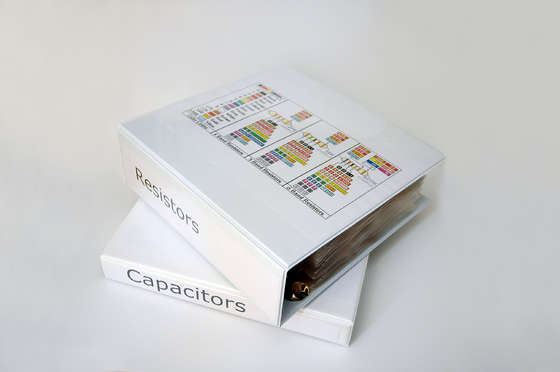Ultimate Parts Storage If you like making things, you probably have hundreds or even thousands of little parts - nuts, bolts, screws, electronic parts, etc. This is one of the cheapest, most compact, flexible, portable and simple ways of storing them - in folders you can put on a bookshelf! This is an embarrassingly simple instructable, but one that has revolutionised the organisation of my parts - read on to find out how I did it.
Over the years, I have struggled to find sensible ways of storing my collection of thousands of small parts in an organised way. If you are like me, you have a huge collection of boxes, parts drawers and plastic containers to store your parts in. Not only are they quite expensive, but they suffer from other problems - parts drawers can tip over and either lose or mix up components, and plastic divider boxes are no better - both of these take up a lot of space as well and as soon as you add a few new components when you have filled up all dividers in the box, or trays in the component bin, you have to work out how to resort your entire collection again! This method uses ordinary ring binders, zip wallets, and grip-seal bags and allows you to create a hierarchical storage system, where you can easily add or remove new categories (folders), sub-categories (zip wallets), and components (grip seal bags).
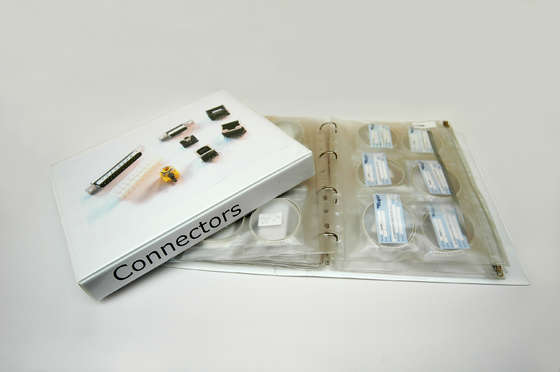
There are three items you will need for this filing system. Firstly you need a ring binder - usually A4 size in Europe, and Letter in the US. I tend to buy a lot on ebay, so would suggest trying that first for the best price. Better to have a 3 or 4 ring version - in Europe, the 4 ring 'D' shape is great, as it holds pages very securely. I also like the ones with clear plastic pockets all around, as you can then customise the spine and front cover (and back as well if you like). The ones I bought were 1.65 pounds each (US $3.34). In Europe, here is an option from ebay, and here is one from viking direct. In the USA, these people have a good price (US $2.13), if you are happy to buy boxes of 12.
The pages I use in the files are a "Zip Punched Pocket" from Rexel - again, I got these on ebay from here as they worked out at only 16 pence (US $0.33) each. In the US, try something like this.
The final item is a pile of 'zip lock' or 'grip seal' bags - again ebay was where I got mine from, but they are also available from packaging stores, like this one in the US. The 3 inch by 2.25 inch size I find great for small parts, as it is the perfect size for electronic items like strips of resistors, but you might also want some larger ones as well.
If you shop around, you can buy a handful of folders, 50 punched pockets, and 1000 zip lock bags for under 25 pounds (US $50.00) - this will be enough to completely organise thousands of small parts!
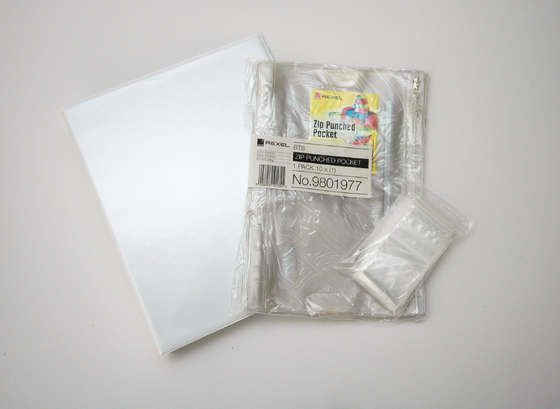
With a few minutes on a word processor, and a quick image search on Google, you can easily find and print out a customised front page and spine - helps to keep things looking smart and easy to find. You can even put some technical information on the front which is relevant to the parts inside - sizing tables, for example, for screws, or a colour code lookup for resistors.
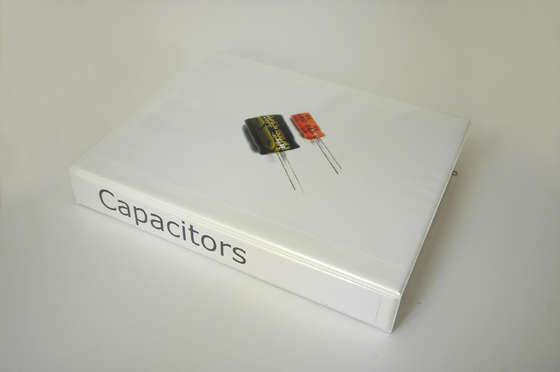
After choosing main 'categories' for your folders, the next step is to setup 'subcategories' using the zip pockets. Label by hand or on the computer, and then put your individual parts inside the small grip seal bags, which then go inside the pockets.
One big advantage is now obvious - you can add and remove the zip pockets in the folder whenever you want, and you can also add or remove the little grip seal bags in the same way. With everything zipped up, you can also literally shake your parts system about, and nothing will fall out. Even if one of the little bags was left open, the worst you will have to do is unzip the pocket, collect the bits, and put them back in the little bag.
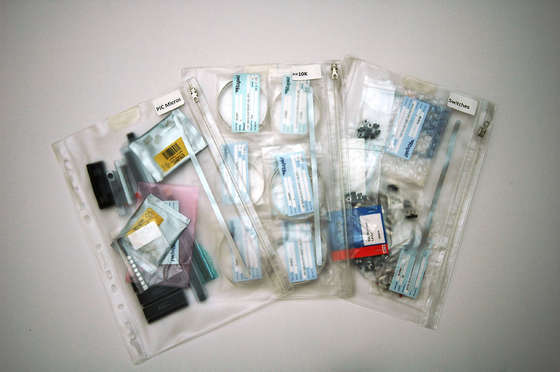
Put all of the zip pockets in the folders, close up, and you are all done! I have now organised over 1000 different types of components in eight folders (less than a quarter of the volume all of my boxes took up!), including all my electronic parts, and all of my miscellaneous small hardware such as nuts, bolts and screws. The largest parts I have also organised in a similar way with "zip bags within zip bags", and then I have stored the collection of bags in some larger plastic drawers.
I have finally got everything organised, for less than 25 pounds (US $50) - it is cheap, flexible, extremely compact, reorganisable, safe (handles the shake test), and portable - perhaps the ultimate small parts storage system!
